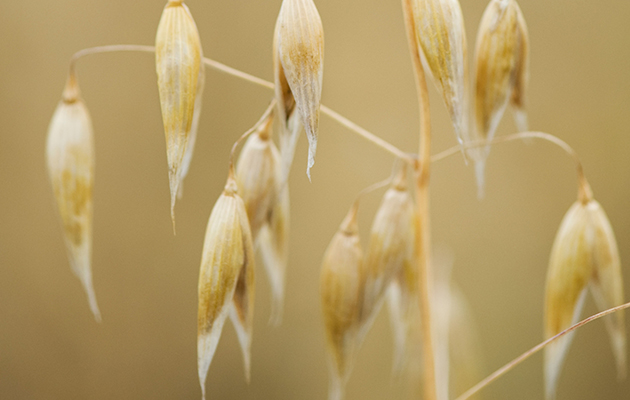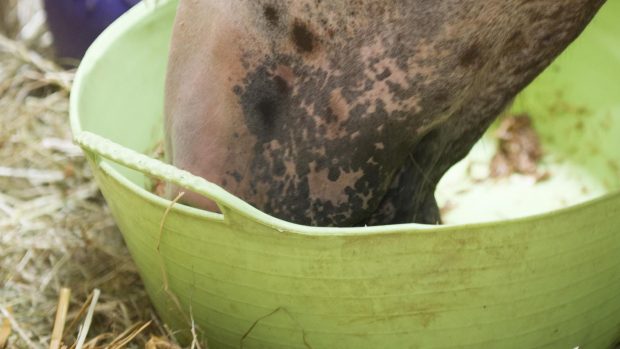Only 40 years ago horse owners had the option of feeding only whole or rolled oats to their horses – there were no compound feeds. All horses were fed oats, hay and grass, in varying proportions depending on its level of work.
Oats were the staple feed for equines because they were readily available, cheap and, most importantly, best suited to their digestive systems. They have the highest fibre content and lowest energy of all the grains, making them the safest to feed. The grain size also meant that horses could chew them effectively, maximising their goodness.
However, as the horse’s role began to shift from work to leisure, its energy requirements changed. Days off and less intensive work schedules led to problems with horses tying up.
Following the development of compound feeds, oats were blamed for excessive excitability as well as physical problems such as azoturia, colic and laminitis.
A balanced view
Today, very few owners use straight oats, but have oats had their day? Their lack of use may stem from concerns about providing horses with an overall balanced diet – often, it is simply easier to use a ready-produced mix.
Independent equine nutritionist Christine Smy explains: “Alone, oats are an unbalanced feed as they are very low in calcium, but relatively high in phosphorous. The latter effectively prevents what calcium there is from being absorbed.
“In addition, they are very low in macronutrients, in particular zinc and copper. All of these deficiencies will limit good bone formation – as a result, straight oats should never be fed to youngstock or brood mares. Finally, oats do not have a good amino acid profile, which means they are not a sufficient source of protein for horses in hard work or breeding.”
However, oats are rarely fed in isolation and when used alongside good quality hay, grass, alfalfa, and a broad-spectrum supplement, many of the potential problems will be off-set. Additionally, specially formulated oat balancers are now available.
There are practical considerations, too. “Oats are cost-effective, especially if you buy feed as a yard,” explains Katie Lugsden, nutritionist for Baileys Horse Feeds. “Because they need no cooking, the production costs are low, making them much cheaper to buy than other cereals.”
Are oats heating?
It’s a commonly held belief that oats send all horses sky-high. In fact, as with any concentrates, if they are fed in proportion to the level of work actually being done, rather than anticipated, oats rarely cause a problem.
“The main myth is that oats create fizzy horses,” says Christine Smy. “In many ways this is unfair, as they actually have the lowest digestible energy of the cereals.”
“Many horses can be pumped full of oats without any problems, while only a few who are sensitive will react in the ways we typically imagine,” agrees Katie Lugsden.
“In the USA, oats are fed to both horses and ponies and are viewed in much the same way as barley is in the UK. Their big hang-up is with maize, and this is perhaps more justified, as it has the highest level of digestible energy and the least digestible form of starch.”
It is starch that causes the “heating” effect, as it is broken down rapidly into glycogen and then glucose. These sugars are absorbed very quickly, giving the horse a rush of energy.
While most horses are not affected, a few react by becoming excitable. This is as likely, if not more so, to occur with maize and barley (which are both higher in energy) as it is with oats.
Types of oat to feed to horses
- Whole oats: These are as they come from the field, complete with the husks (or outer casing). This means they have the highest fibre level of all oats and grains. However, very young horses or veterans with teeth problems may have difficulty chewing these, so will not get the full nutritional benefit.
- Bruised oats: The husk of the oat is broken to allow access to the nutrients. Bear in mind that this process will shorten the shelf life of the oats to a few weeks.
- Rolled oats: Rolling has a similar effect to bruising. Traditionally, horsemen would buy whole oats and roll them on an ad hoc basis to maximise storage time.
- Crimped oats: This process damages the husk and increases the surface area, so the digestive juices can get to work more effectively.
- Clipped oats: Oats are often clipped alongside bruising. The ends of the grain are trimmed to give a neater final product.
- Crushed oats: This is a rougher process, which involves breaking both the husk and the kernel of the oat. This makes them slightly more digestible, but they suffer from an even shorter shelf life.
- Naked oats: These are not processed, but are grown to have loose husks that are shed when harvested. This lowers the fibre content and increases digestibility. In addition, they have a third more digestible energy and protein than a standard oat, plus they are high in oil. These elements are the ‘rocket fuel’ in oats.



